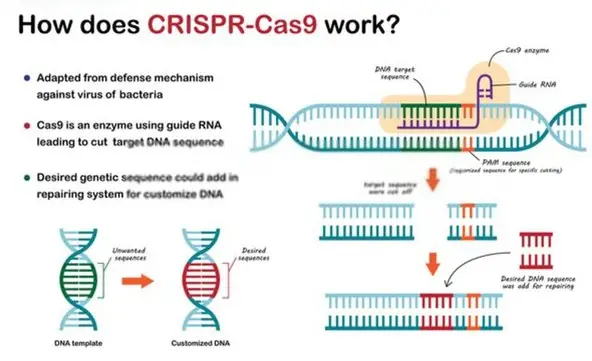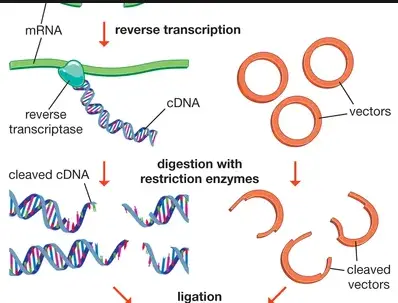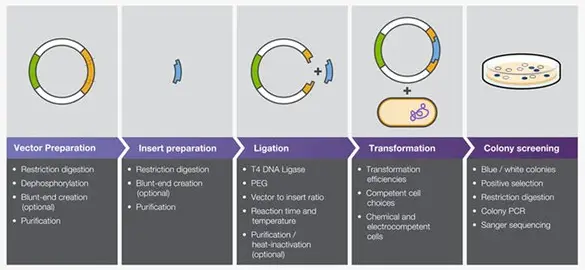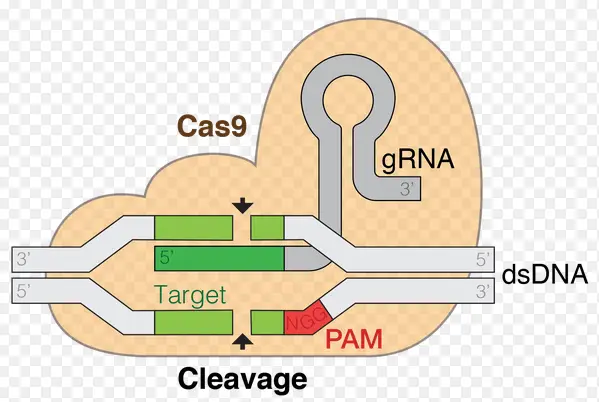Genetic engineering continues to evolve, offering scientists tools to alter and understand the genetic fabric of organisms. Among these tools, Crispr and restriction enzymes stand out due to their revolutionary impacts in different fields of biology. Both technologies play crucial roles but function through distinctly different mechanisms and applications.
Crispr (Clustered Regularly Interspaced Short Palindromic Repeats) and restriction enzymes are both used to edit and manipulate DNA, but they differ significantly in their approach. Crispr, guided by RNA, allows for precise editing at specific locations within the genome. In contrast, restriction enzymes cut DNA at specific recognition sites, which can be less targeted compared to Crispr’s method.
The relevance of these technologies extends beyond the laboratory. They are integral to developments in medicine, agriculture, and biotechnology, providing tools that can potentially cure genetic diseases, enhance crop resilience, and much more. The distinct characteristics of Crispr and restriction enzymes underscore their complementary uses in scientific research and their transformative potential in various industries.

Crispr Technology
What is Crispr?
Crispr (Clustered Regularly Interspaced Short Palindromic Repeats) represents a groundbreaking gene-editing technology, originally discovered as part of a bacterial defense system. Its ability to alter DNA sequences makes it an invaluable tool for genetic engineering, allowing scientists to correct genetic defects, treat and prevent the spread of diseases, and improve crops.
Components of Crispr
Crispr consists of two key components:
- Guide RNA (gRNA): This is a short synthetic RNA composed of a small sequence that guides the Crispr system to the correct part of the DNA to be edited.
- Cas enzymes: The most common is Cas9, an enzyme that acts like molecular scissors to cut the DNA at a specific location, allowing genes to be removed or added.
Mechanism of Action
The mechanism of Crispr involves several steps:
- Identification: The guide RNA binds to a specific target sequence in the DNA.
- Binding: Cas9 binds to the DNA and unwinds it, checking if the target sequence matches the RNA sequence.
- Cutting: If a match is found, Cas9 cuts the DNA at the target location, allowing for gene editing.
This precise system can be used to disable a gene, correct a genetic mutation, or even insert new genes in living organisms.
Restriction Enzymes
What are Restriction Enzymes?
Restriction enzymes, also known as restriction endonucleases, are proteins used by bacteria to defend against viral DNA. They are essential tools in molecular biology, used to cut DNA at specific recognition sites, which is crucial for DNA cloning, gene splicing, and genomic mapping.
Types of Restriction Enzymes
There are several types of restriction enzymes, but they are generally classified into three main categories:
- Type I: These enzymes cut DNA at sites remote from a recognition site and require ATP to function.
- Type II: These are the most widely used in molecular biology as they cut within or at short specific distances from their recognition sites.
- Type III: These enzymes cut DNA at sites a short distance away from a recognition site and also require ATP.
How Restriction Enzymes Work
The action of restriction enzymes involves:
- Recognition: Each enzyme recognizes specific, short sequences of DNA and binds at these sites.
- Cutting: Once bound, the enzyme cuts the DNA backbone at a specific point within or near the recognition site.
This ability to cut at precise locations allows scientists to easily manipulate fragments of DNA in a predictable and manageable way.
Key Differences
Functional Distinctions
While both Crispr and restriction enzymes edit DNA, their approaches and outcomes vary greatly:
- Crispr can be programmed to target almost any genetic sequence, making it highly versatile and precise.
- Restriction enzymes are limited to cutting DNA at specific sequences that naturally occur in the genome.
Accuracy and Efficiency
- Crispr offers a higher precision in targeting specific genetic codes, which minimizes off-target effects and increases the efficiency of genetic modifications.
- Restriction enzymes, while precise in their cuts, do not offer the same level of control over where a new gene is inserted, which can lead to less predictable outcomes.
Applications in Research
In research, Crispr is used for gene knockouts, gene tagging, and genome-wide association studies, whereas restriction enzymes are used for gene cloning and constructing genetic libraries, each playing critical roles in expanding our understanding of genetics.
Applications in Medicine
Crispr in Therapeutic Development
Crispr’s precision makes it particularly promising for therapeutic applications. It is being explored for treating genetic disorders by directly correcting disease-causing mutations, creating potentially permanent remedies for conditions like sickle cell anemia, cystic fibrosis, and even some cancers.
Restriction Enzymes in Disease Diagnosis
Restriction enzymes are vital in diagnostic processes, especially in identifying and mapping pathogens’ DNA. They help in the quick diagnosis of diseases by cutting and analyzing the DNA of pathogens, making it easier to identify specific infections.

Industrial and Agricultural Use
Crispr in Agriculture
Crispr technology has revolutionized the field of agriculture, enabling the development of crops that are more resistant to diseases, pests, and environmental stresses. The precision and efficiency of Crispr allow for specific traits to be enhanced or suppressed without introducing foreign DNA, which is a significant advantage over traditional genetic modification techniques.
- Disease Resistance: By editing genes that make crops vulnerable to diseases, Crispr can create plants that are naturally resistant to a variety of pathogens.
- Drought Tolerance: Modifications in certain genes can make plants more resilient to water shortages, improving their survival and reducing water use in agricultural practices.
- Nutrient Use Efficiency: Crispr can enhance a plant’s ability to absorb and utilize nutrients more effectively, leading to healthier crops and reduced need for chemical fertilizers.
These advancements not only improve the sustainability of agricultural practices but also promise to enhance food security globally by producing crops that can thrive in less-than-ideal conditions.
Restriction Enzymes in Biotechnology
Restriction enzymes have been a staple in biotechnological applications long before the advent of genome editing tools like Crispr. Their ability to cut DNA at specific sites has enabled a plethora of applications in genetic engineering, including cloning and the construction of recombinant DNA.
- Genetic Cloning: Restriction enzymes are used to cut both the DNA of interest and the vector DNA precisely, ensuring that the DNA fragments can be easily ligated.
- Recombinant DNA Technology: By cutting and recombining DNA from different organisms, restriction enzymes facilitate the creation of new genetic sequences with desired properties.
The application of restriction enzymes in biotechnology has led to significant breakthroughs in medicine, agriculture, and industrial processes, highlighting their critical role in advancing genetic engineering.
Ethical Considerations
Ethical Debates Around Crispr
The use of Crispr technology raises significant ethical questions, particularly regarding its applications in human genetics. The potential to edit the human germline and make changes that will be passed on to future generations has sparked a heated debate among scientists, ethicists, and the public.
- Gene Editing in Humans: The possibility of editing human embryos to prevent genetic diseases is an area of both great potential and considerable controversy. The concern lies in the possibility of unintended consequences and the ethical implications of altering human evolution.
- Designer Babies: Another ethical concern is the potential use of Crispr to create so-called “designer babies,” where genetic attributes like appearance, intelligence, and physical abilities could be customized, leading to social and ethical dilemmas.
These debates are crucial in shaping the regulations and guidelines that govern the use of Crispr technology, ensuring responsible scientific conduct and respect for human values.
Regulation of Genetic Tools
Regulating genetic tools like Crispr and restriction enzymes is crucial to ensure their safe and ethical use. Regulatory frameworks typically focus on:
- Safety: Ensuring that the use of these tools does not pose undue risks to human health or the environment.
- Ethics: Addressing the ethical implications of genetic modifications, especially in humans and other vertebrates.
- Accessibility: Regulating the availability of these powerful technologies to prevent misuse and ensure that their benefits can be enjoyed globally in a fair and equitable manner.
Future Perspectives
Advancements in Crispr Technologies
The future of Crispr holds promise for even more refined and versatile applications. Ongoing research aims to enhance its accuracy, reduce off-target effects, and expand its use across various fields.
- Improved Precision: Efforts are ongoing to develop newer versions of Cas enzymes that offer higher fidelity and fewer unintended edits.
- Expanded Applications: Crispr is being explored in fields beyond medicine and agriculture, such as bioenergy, where it could help develop high-yielding biofuel crops.
Innovations in Restriction Enzyme Usage
As for restriction enzymes, their future involves innovations that could expand their utility in genomic research and beyond.
- New Enzymes: Discovery and characterization of new restriction enzymes with unique properties could open up further possibilities in molecular biology.
- Synthetic Biology: Using restriction enzymes in synthetic biology to create new biological systems or redesign existing ones for better functionality.

FAQs
How does Crispr work?
Crispr works by using a guide RNA to identify specific DNA sequences, allowing the associated Cas enzyme to make precise cuts or edits at the targeted location. This technology enables scientists to add, remove, or alter sections of DNA sequence with high precision.
What are restriction enzymes used for?
Restriction enzymes are primarily used in molecular biology for cutting DNA at specific sequences known as recognition sites. This ability makes them invaluable for cloning, gene splicing, and DNA mapping projects, where precise cuts and splices of DNA are necessary.
Can Crispr and restriction enzymes be used together?
Yes, Crispr and restriction enzymes can be used in conjunction to achieve more complex genetic modifications. While Crispr offers precise editing capabilities, restriction enzymes can facilitate the insertion of new DNA fragments at specific locations, enhancing the efficiency and versatility of genetic engineering projects.
What are the ethical concerns with using Crispr?
The primary ethical concerns with using Crispr include the potential for off-target effects, genetic discrimination, and changes to the germline that are passed to future generations. The debate centers on the implications of ‘playing God’ with genetic material and the long-term impacts on biodiversity and human genetics.
Conclusion
As we advance our understanding and capabilities within genetic engineering, Crispr and restriction enzymes emerge as pivotal tools with the potential to drive significant scientific, medical, and technological breakthroughs. These tools, while different in their mechanisms and applications, complement each other and expand the horizons of genetic research and therapy.
The continuing evolution of these technologies highlights the importance of ethical considerations and regulatory measures to ensure their responsible use. By navigating these challenges wisely, we can harness the full potential of Crispr and restriction enzymes to address some of the most pressing biological and medical challenges of our time.

